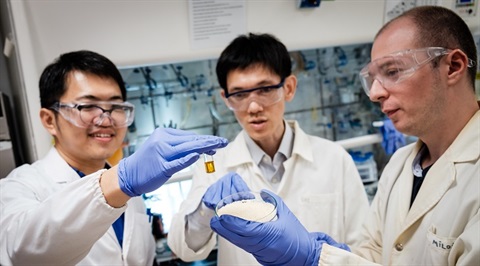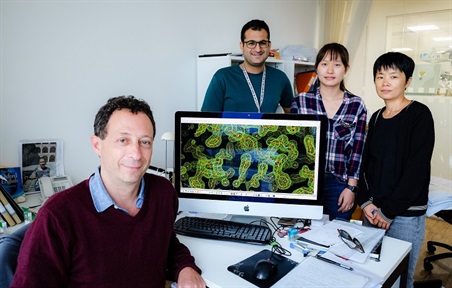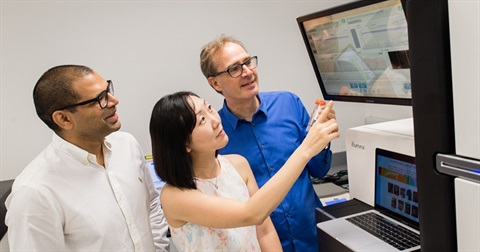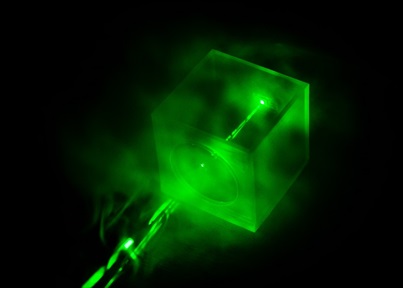NTU Singapore scientists find easier way to harvest healing factors from adult stem cells in the lab
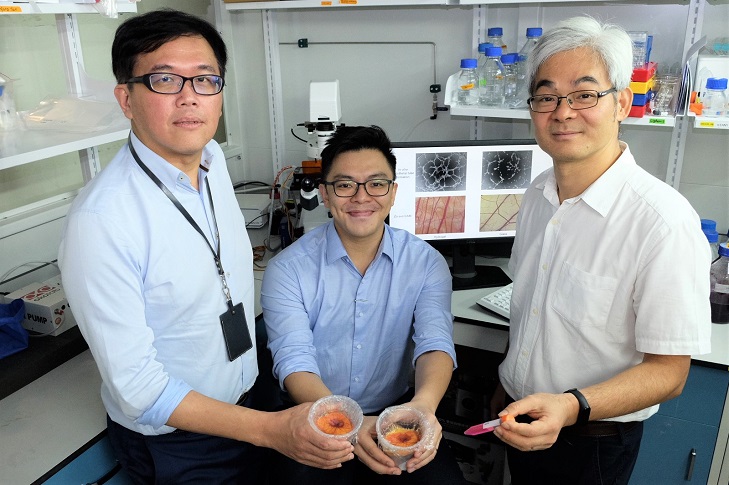
A research team at Nanyang Technological University, Singapore (NTU Singapore) has found an easier way to harvest healing factors – molecules that promote tissue growth and regeneration – from adult stem cells.
Presently, scientists ‘pre-condition’ adult stem cells to secrete healing factors by putting them in a low-oxygen chamber or by using biochemicals or genetic engineering.
However in lab experiments, the NTU team of materials scientists and biologists tried mimicking the physical conditions that cells find inside the body and grew a particular type of stem cell – Mesenchymal Stem Cells (MSCs) – on a softer surface than is normally used.
MSCs grown on the softer surface, known as hydrogel, increased their secretion of healing factors, known as the secretome, compared to normal growing surfaces.
This method of growing MCSs on hydrogel, a three-dimensional network of polymers with high water content, could potentially be scaled up for mass production of healing factors by biotech companies.
The findings were reported in Advanced Healthcare Materials by a multi-disciplinary team comprising NTU Assistant Professor Dalton Tay from the School of Materials Science and Engineering, and NTU associate professors Andrew Tan from the Lee Kong Chian School of Medicine and Newman Sze from the School of Biological Sciences.
In the human body, MSCs are present in many tissues, muscles and organs. When they detect tissue damage, they produce healing factors to speed up repairs.
Earlier studies by the same team showed that when bioengineered secretome was applied to mice skin wounds, after five days wounds had closed by an average of 71 per cent. Mice which did not have the secretome applied had wound closures of 60 per cent after five days.
In their latest study, the NTU team showed that the secretome improved blood vessel formation by up to 60 per cent in a chicken egg (chorioallantoic) membrane model over three days, compared to a chicken egg membrane with no secretome applied.
The discovery of the pathway that stimulates MSCs to produce therapeutically active secretome was made by the winners of the 2019 Nobel Prize in Physiology or Medicine, Dr William G. Kaelin Jr, Sir Peter J. Ratcliffe and Prof Gregg L. Semenza, who were recognised “for their discoveries of how cells sense and adapt to oxygen availability”.
Other scientists have used this concept of oxygen starvation to artificially stress MSCs. This in turn activates a major switch, known as hypoxia-inducible factor 1-alpha (HIF 1-α), that promotes tissue blood vessel growth and repair.
The NTU scientists took these studies one step further and showed that by adjusting the softness of the hydrogel on which the MSCs were cultured, to as soft as fat tissue, they could activate the HIF 1-α signalling under normal oxygen conditions, without any additional biological or pharmacological agents.
The researchers believe that using the materials’ stiffness to manipulate MSCs oxygen-sensing metabolism could be useful in the development of advanced cell culture materials that are able to improve the production and therapeutic potential of the MSC secretomes. Such a development would be advantageous to the biopharmaceutical companies that are currently exploring the development of new MSCs-based cell-free therapies.
“Our goal is to make MSCs produce the same healing factors in the lab as they do in the body during tissue repair, and that these might then be made into serums or incorporated into tissue patches that when applied to injuries, would increase the speed of healing,” said Prof Tay.
The team now plans to study in further detail why biomimicking soft surfaces would cause stress to the MSCs and aims to translate the use of the biomaterials-engineered MSCs secretome to the treatment of chronic wounds and vascular diseases in humans.
This two-year research project was funded by NTU Singapore and Singapore’s Ministry of Education Tier 2 Academic Research Fund.
###
Notes to Editor:
Paper titled “Materials Stiffness-Dependent Redox Metabolic Reprogramming of Mesenchymal Stem Cells for Secretome-Based Therapeutic Angiogenesis”, published in Advanced Healthcare Materials, Oct 2019.
Paper titled “Soft Material Approach to Induce Oxidative Stress in Mesenchymal Stem Cells for Functional Tissue Repair”, published in Applied Materials & Interfaces, Dec 2016.



.tmb-listing.jpg?Culture=en&sfvrsn=48c23aea_1)
